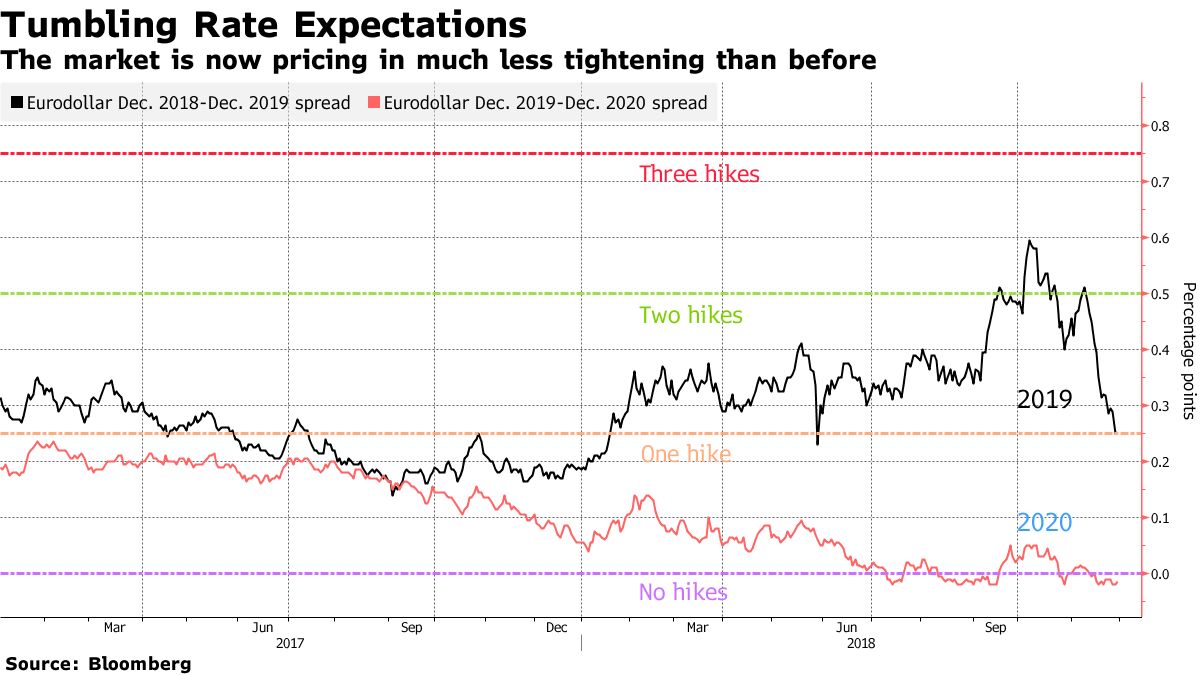Navigating The Chinese Market: Case Studies Of BMW And Porsche's Challenges

Table of Contents
BMW's Strategy in the Chinese Market
Localization and Customization
BMW's success in the Chinese market hinges on its deep understanding of local preferences. The company hasn't simply exported its existing models; instead, it has invested heavily in localization and customization. This approach acknowledges the distinct needs and desires of Chinese consumers, who often prioritize specific features and vehicle characteristics.
- Tailored models and features: BMW offers long-wheelbase versions of its popular models, catering to the preference for spacious interiors. They've also incorporated features specifically requested by Chinese consumers, enhancing the overall appeal.
- Investment in local R&D and manufacturing: BMW has established significant R&D and manufacturing facilities within China, fostering closer ties with the local market and contributing to quicker response times to evolving consumer trends. This reduces reliance on imports and allows for faster adaptation to market changes.
- Strategic partnerships: Collaborations with local suppliers and distributors have been crucial for BMW's success. These partnerships enhance distribution efficiency, build trust, and provide valuable market insights.
- Culturally relevant marketing: BMW's marketing campaigns are meticulously crafted to resonate with Chinese culture and values. Understanding subtle cultural nuances is key to effective advertising within the Chinese market.
Competition and Market Saturation
The luxury car segment in China is fiercely competitive. BMW faces intense pressure from both established international brands and rapidly growing domestic competitors. Maintaining market share requires continuous innovation and strategic adjustments.
- Intense rivalry: The Chinese luxury car market is saturated, creating an environment of intense rivalry. BMW constantly faces challenges from brands like Audi, Mercedes-Benz, and increasingly, strong domestic players.
- Pricing and exclusivity: Balancing brand exclusivity with competitive pricing is a constant challenge. Maintaining a premium image while remaining price-competitive requires a delicate balance.
- Continuous innovation: To stay ahead, BMW must continuously innovate and introduce new models and technologies that appeal to the discerning Chinese consumer. Staying at the forefront of technological advancements is crucial.
- Environmental concerns: Addressing environmental regulations and consumer concerns regarding sustainability is paramount. Investment in electric vehicles and hybrid technologies is vital for long-term success within the Chinese market.
Porsche's Approach to the Chinese Market
Brand Prestige and Exclusivity
Porsche has prioritized maintaining its brand image of prestige and exclusivity within the Chinese market. This strategy targets a specific high-net-worth demographic that values luxury and performance above all else.
- Emphasis on luxury and performance: Porsche continues to focus on its core strengths: exceptional engineering, high performance, and a luxurious driving experience. This resonates with the affluent Chinese consumer.
- Limited production: Maintaining exclusivity is a cornerstone of Porsche's strategy. Limited production runs for certain models help to preserve their desirability and enhance their perceived value.
- Premium dealership network: Porsche has carefully cultivated a network of premium dealerships in prime locations across China. The retail environment reinforces the brand's image of luxury and exclusivity.
- Targeted marketing: Marketing efforts are highly targeted toward high-net-worth individuals and those who appreciate Porsche's heritage and performance legacy. This refined approach maximizes marketing ROI.
Evolving Consumer Preferences and Electric Vehicles (EVs)
Adapting to shifting consumer preferences, particularly the growing demand for electric vehicles (EVs), is a crucial challenge for Porsche in China.
- Growing demand for EVs: The Chinese market is rapidly adopting electric and hybrid vehicles. Porsche must invest significantly in EV technology to remain competitive.
- Balancing heritage with innovation: Porsche needs to carefully balance its established brand heritage with the adoption of new technologies. This requires a strategic approach that avoids alienating its traditional customer base while attracting new EV buyers.
- Competition from domestic EV manufacturers: Domestic Chinese EV manufacturers are rapidly innovating and offering competitive and affordable options, posing a considerable challenge to established luxury brands.
- Charging infrastructure: The availability of robust charging infrastructure is vital for the widespread adoption of EVs. Addressing this concern is crucial for Porsche's success in the Chinese EV market.
Common Challenges Faced by Both Brands
Regulatory Hurdles and Government Policies
Navigating the complex regulatory landscape of the Chinese automotive industry presents significant challenges for both BMW and Porsche.
- Stringent emission standards: China has implemented stringent emission standards and environmental regulations, requiring significant investment in cleaner technologies.
- Import tariffs and trade policies: Understanding and managing import tariffs and other trade policies are essential for profitability and operational efficiency.
- Legal framework compliance: Adhering to local legal frameworks and regulations is paramount to avoiding legal issues and maintaining a positive reputation.
- Government relations: Maintaining strong relationships with government officials and regulatory bodies is crucial for navigating the complexities of the Chinese market.
Understanding the Chinese Consumer
Cultural nuances and evolving consumer behaviors require a deep understanding for success in the Chinese market.
- Social status and brand image: Brand image and social status are highly valued by Chinese consumers, influencing purchase decisions significantly.
- Digital marketing prominence: Digital marketing and online platforms play a crucial role in reaching and engaging Chinese consumers.
- Personalized customer service: Providing personalized customer service and tailored experiences is crucial for building customer loyalty.
- Regional differences: Understanding regional variations in consumer preferences and adapting strategies accordingly is critical for effective market penetration.
Conclusion
Successfully navigating the Chinese market requires a multifaceted strategy that combines product localization, brand building, and a deep understanding of the local consumer. Both BMW and Porsche demonstrate both successes and challenges in this dynamic environment. Their experiences highlight the importance of adaptability, innovation, and a long-term commitment to the market. By learning from their case studies, other companies can better prepare themselves to overcome the unique hurdles presented by the vast and competitive Chinese market. To learn more about conquering the challenges of entering the Chinese market, explore further research into localization strategies and market analysis. Don't hesitate to contact us for expert advice on navigating the Chinese market and achieving sustainable growth in this dynamic region.

Featured Posts
-
 Alex Winters Early Comedy Career Unveiling His Pre Freaked Mtv Shows
May 12, 2025
Alex Winters Early Comedy Career Unveiling His Pre Freaked Mtv Shows
May 12, 2025 -
 Powells Comments Cool Bond Traders Rate Cut Expectations
May 12, 2025
Powells Comments Cool Bond Traders Rate Cut Expectations
May 12, 2025 -
 Jessica Simpson And Eric Johnson Co Parenting And Friendship Following Separation
May 12, 2025
Jessica Simpson And Eric Johnson Co Parenting And Friendship Following Separation
May 12, 2025 -
 Mastering Your Games The One Controller Solution
May 12, 2025
Mastering Your Games The One Controller Solution
May 12, 2025 -
 Uruguays Film Industry Location Scouting And Production Incentives
May 12, 2025
Uruguays Film Industry Location Scouting And Production Incentives
May 12, 2025
Latest Posts
-
 Povratok Vo Premier Ligata Za Lids I Barnli
May 13, 2025
Povratok Vo Premier Ligata Za Lids I Barnli
May 13, 2025 -
 Lids I Barnli Obezbedi A Mesto Vo Premier Ligata
May 13, 2025
Lids I Barnli Obezbedi A Mesto Vo Premier Ligata
May 13, 2025 -
 Lids Una Ted I Barnli Se Vrakjaat Vo Premier Ligata
May 13, 2025
Lids Una Ted I Barnli Se Vrakjaat Vo Premier Ligata
May 13, 2025 -
 Derbito Odluchi Barnli I Lids Se Vrakjaat Vo Premier Ligata
May 13, 2025
Derbito Odluchi Barnli I Lids Se Vrakjaat Vo Premier Ligata
May 13, 2025 -
 Triumf Za Barnli Pobeda Vo Derbito I Promotsi A Vo Premier Ligata
May 13, 2025
Triumf Za Barnli Pobeda Vo Derbito I Promotsi A Vo Premier Ligata
May 13, 2025
